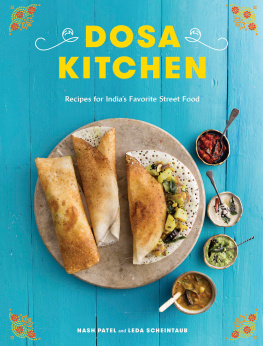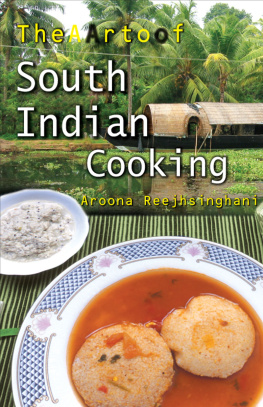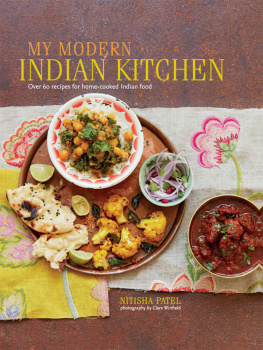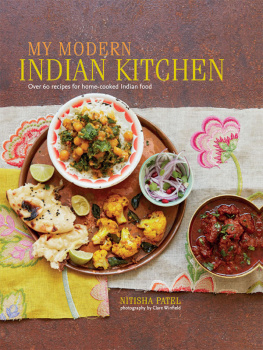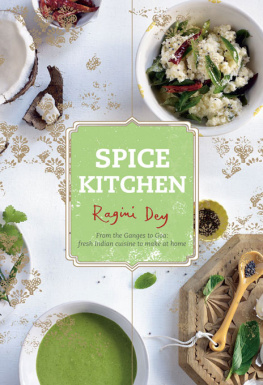Contents
TROUBLESHOOTING
Is it OK to use tap water to make dosas?
Most tap water is chlorinated, which may inhibit fermentation of the batter. We prefer to use the same quality of water that we drink: filtered. The most economical and convenient filters are the type installed under your sink or on the tap.
How did you come up with the formula for your batter?
Many dosa recipes call for a ratio of 3:1 rice to urad dal, rather than our 2:1 ratio. Weve found the results to be much the same, but there are two advantages to our ratio: 2 cups of rice blends easily in one shot in the blender (3 cups would mean blending in two batches), plus the additional dal makes your dosas a better source of protein.
Can I make my dosas organic?
Yes. Look for organic rice and dal options at an Indian grocery store or online (see Resources, ). Organic white rice (but generally not dal) is readily available in natural food storesLundberg is a trusted brand.
Are dosas gluten-free?
Yes, but if you have an extreme gluten sensitivity or celiac disease, read labels to check if the rice or dal was processed in a facility that also processes wheat. Some people include a small amount of maida, or white flour, in their dosa batter to help with browning, but we find it makes the dosas taste less fermented, and we prefer to keep our dosas gluten-free. If you are following a fully gluten-free diet, when you go out for a dosa, ask the server at the restaurant if their dosa batter contains wheat.
What is the ideal fermentation vessel?
Glass, stainless steel, ceramic, or food-grade plastic all work well. Reactive materials, such as aluminum, do not agree with fermentation and are not recommended.
What will affect the yield of my dosa batter?
Each variety of rice will give a slightly different yield. We find idli rice gives our dosa batter the best volume, and sona masuri (masoori) is another popular choice. The yield will also be affected by how high your dosa batter rises.
What is the perfect size for a dosa?
In Indian restaurants and at roadside stands, dosas are often served in larger than life sizes, from 21 inches up to 5 feet! At our food truck, we serve a 32-inch family-size dosa that feeds four. Most of us dont have that kind of space at home, so here we give instructions for making up to 18-inch dosas. Feel free to scale down more or expand to your kitchen equipments capacity and your comfort zone. The pancake, or thicker version of the dosa, and wrap are about 10 inches round. For smaller appetites or when youre just starting out, try making smaller dosas. If you dont have a large pan, you can make smaller crepe-style dosas on your 10-inch dosa pan by using less batter. You really cant go wrong!
How do I grease the pan?
Prepare the pan by using the paper towel or onion half method (see ). Then add the dosa batter, and when the bottom starts to set, take a squeeze bottle filled with oil and drizzle it generously into the holes that form on the surface of the dosa. This crisps up the dosa and ensures that it doesnt stick to the pan. When making subsequent dosas, if the pan starts to get too hot, dip the paper towel or onion half first in water and then in oil and rub it over the pan before making your next dosa. Over time, youll get a feel for how much water and oil you need and when you need it. Pro tip: At our food truck, where we make many dosas every day, we fashion an oil cloth out of clean cotton T-shirt material (which you can find in a hardware store) and wrap it up into a cylinder, then tie it with kitchen string to secure it.
What if my first dosa is a dud?
Welcome to the club. Consider your first dosa your test dosa; if it didnt spread easily, add a little more water to the batter, and when you taste it, see if it needs a little more salt. If it stuck to the pan, scrape off any remains, and be sure to dip your paper towel in water and oil before the next dosa (see ). Also try drizzling a little more oil into the holes of your next dosa before flipping it. Be sure your pan is hot enoughcheck by splashing a few droplets of water on it and seeing if they sizzleand remember to bring your batter to room temperature before making dosas. As long as your dosa is cooked through, its going to taste delicious. If your dosa has areas that are thicker than others and are threatening to undercook, scrape those spots with a metal spatula to remove the excess batter. Conversely, if the dosas are starting to overbrown on the bottom before the top sets, lower the heat a little and place a lid on the pan. Even if your dosa looks more like the outline of India than a perfect oval or round, dont be discouraged. Just remember that its not the shape of the dosa that matters but how it tastes!
What is the ideal fermentation temperature?
The ideal temperature for fermentation is 90F. There are several ways to hold your temperature in this vicinity:
In the oven with the viewing light (not the pilot light) turned on. We recommend using an oven thermometer to gauge your ovens temperature. We turn the oven to 200F, then turn off the oven and let it cool to about 100F before putting the batter in the oven. This initial higher temperature jump-starts fermentation. An oven thermometer comes in handy here. Tape over the temperature control so you dont accidentally turn on the oven while the batter is fermenting. If you need the oven for an hour or two for something else, no problem: Remove the dosa batter, do your baking, then almost fully cool the oven (to the point where you can comfortably touch a rack) and return the dosa batter to the oven to finish fermenting.
In a dehydrator with removable shelves and a thermostat. Set the thermostat to 90F.
Atop a heating pad set to the lowest temperature. Cover the heating pad with a waterproof cloth to keep it safe from accidental spills.
In your warmest room when the weather is South Indian sultry. Keep the batter out of direct sunlight.
How do I get my dosas really browned and crisp?
Be sure your pan is very hot and that you start with room-temperature batter. Be liberal when drizzling oil over your dosas in the pan. Chana dal helps give a nice brown color to your dosas (see ).
What else can I do with chutney?
After youve blended and poured out your chutney, add some Turmeric Bone Broth () to the blender and blend briefly to incorporate the chutney remnants. Instant soup!
Add a little chutney to dosa batter for extra flavor.
Add a spoonful of chutney to season a stir-fry or steamed vegetables.
Whisk some olive oil into chutney to make salad dressing.
Pour some chutney over scrambled eggs.
Dip a Dosa Chip () in chutney.
What is the proper way to eat a dosa?
With a fork is fine, but we prefer the intimacy of our hands, treating the dosa as an eating utensil to scoop up the filling, or as a burrito-like wrap. In India, eating with your hands is common and many restaurants have dedicated handwashing stations to visit after the main coursesome will even bring you individual bowls of warm water with a squeeze of lime (and if youre lucky, a few flower petals) to wash with.
Are there other types of dosas?
Quite a few: from pesarattu dosa (made from mung dal) to neer dosa (made solely from rice) to adai (made from rice and a variety of lentils). We love them all and encourage you to explore once youve mastered the classic dosa.
RESOURCES
INGREDIENTS
Kalustyans
Comprehensive source for Indian ingredients, including kodampuli (listed as kadam-puli/cambodge on their website)
www.kalustyans.com
212-685-3451
Mountain Rose Herbs
Wide selection of organic spices
www.mountainroseherbs.com

